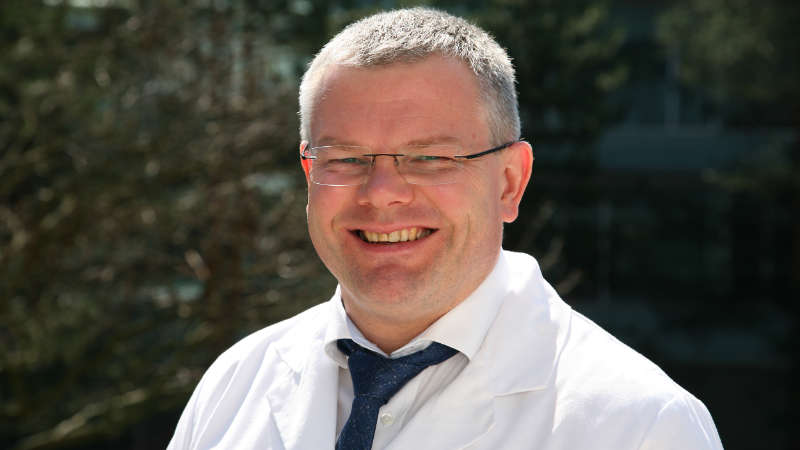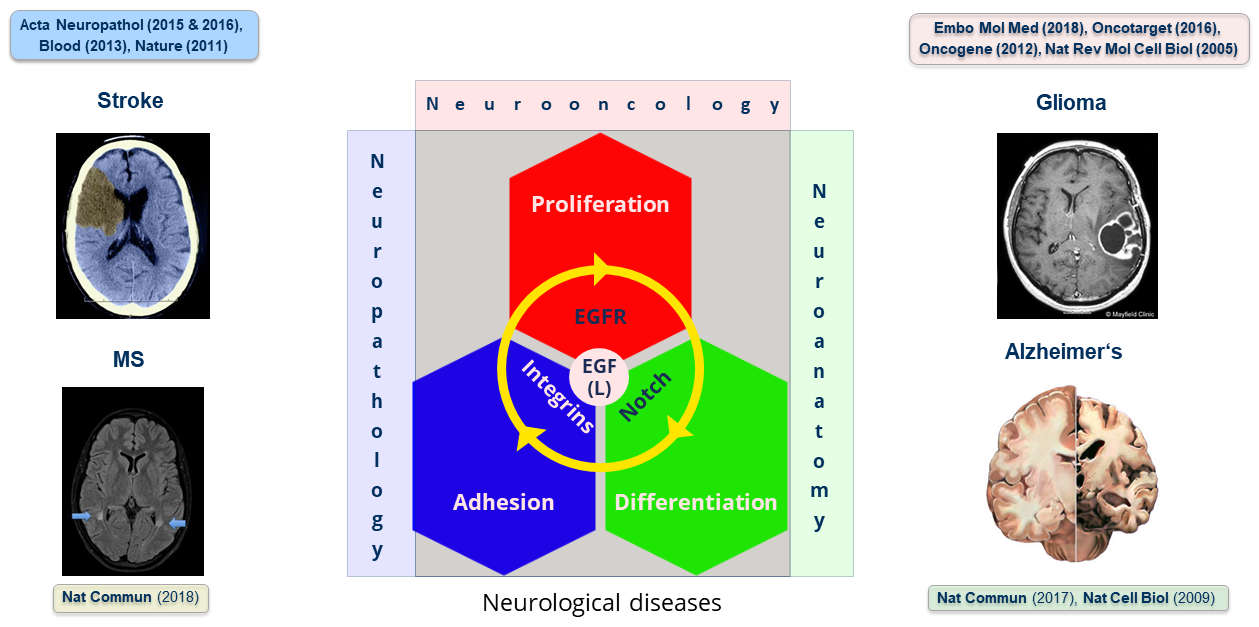Mirko Schmidt Group
Understanding the brain and curing its diseases

The Institute of Anatomy focuses on the understanding of central nerve system (CNS) plasticity and the cure of its diseases. Questions of life sciences and translational research approaches are applied with the aim of contributing to the cure of patients. In particular, researchers in the lab analyze I) how neural stem cells are regulated in the adult brain, whether these cells can be exploited for the cure of neurodegenerative diseases (e.g., Alzheimer’s disease), and what influence newborn neurons may have on homeostasis and allostasis in the adult brain (e.g., in resilience disorders). Research also focuses on exploring the molecular causes of II) neurovascular (e.g., stroke) and neuroinflammatory diseases (e.g., multiples sclerosis) and how these illnesses can be prevented, cured or at the least, how their detrimental effects on the brain can be attenuated. Furthermore, it is studied III) how malignant brain tumors (e.g., glioma) form and how they can be treated beyond conservative medicine. In particular, we study factors that affect the tumor vasculature and/or change the tumor microenvironment to allow malignant glioma to evade the patient’s immune system.
In particular we study molecular signal transduction processes that are mediated by proteins secreted by cells or localized in their plasma membrane. These molecular targets offer the advantage of being druggable from the cellular exterior. Examples of signaling modules analyzed are epidermal growth factor (EGF)/EGF receptor (EGFR)-, EGF-like protein 7 (EGFL7)/Notch-, or extracellular matrix (ECM)/integrin-mediated signaling pathways. The MS-TL cover a broad range of life science techniques ranging from biochemical analyses via advanced imaging and lab animal models to the analysis of human specimens. We are part of a close international research network, comprising mostly groups from Germany, the European Union, Switzerland and the USA.
Future Projects and Goals
Using methods of molecular signal transduction we will understand the brain and its diseases, translate this knowledge into clinical applications and such contribute to the cure of neurological diseases in patients.
Methodological and Technical Expertise
- In vivo analyses using mouse models of human diseases
- Microscopy and histology
- Proteomics (Protein purification, immunoblotting, immunoprecipitation)
- Cell culture including viral vectors
- Analysis of human materials including human corpuses
